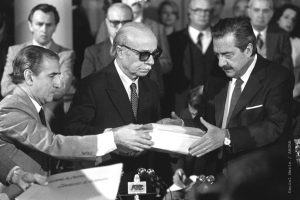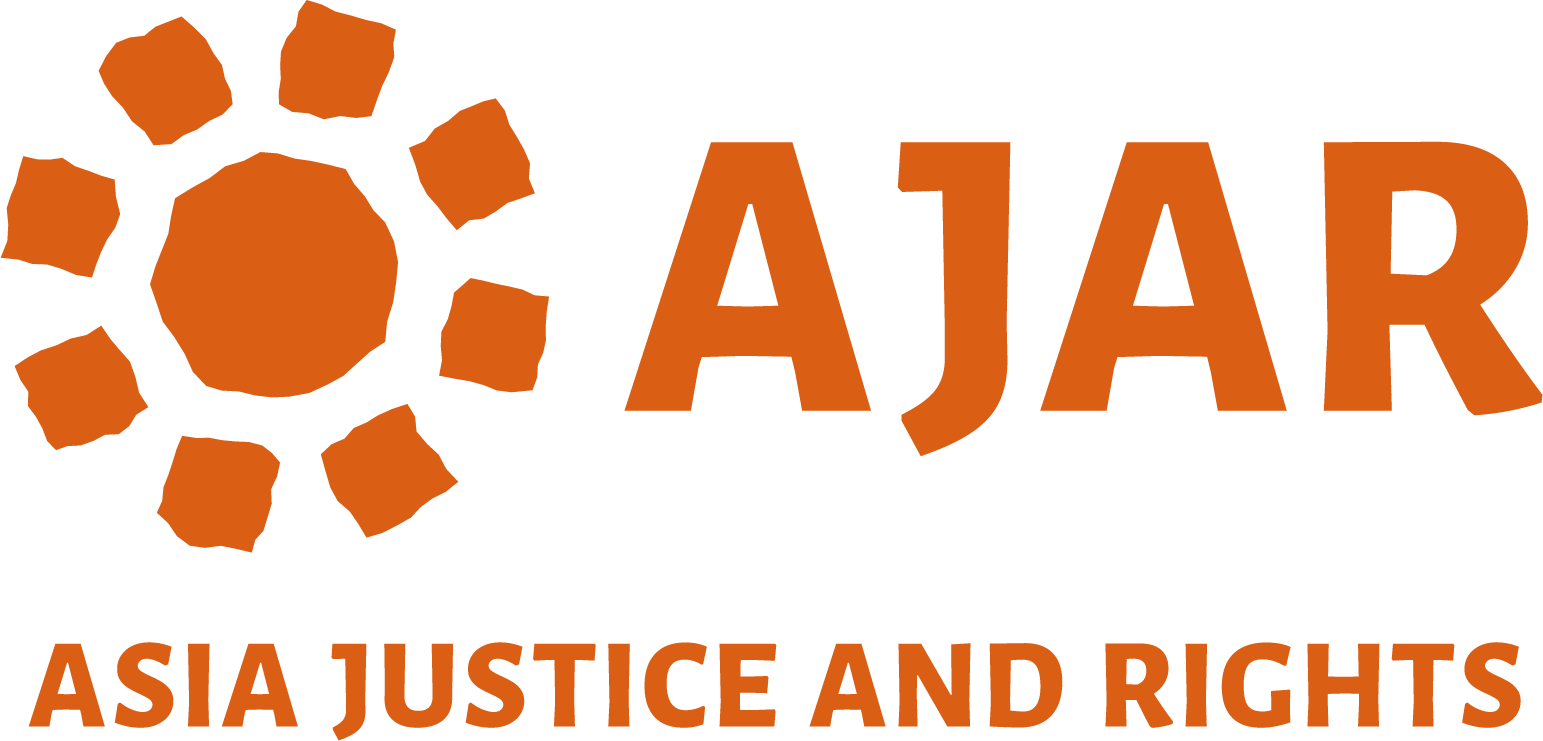
Delivery of the CONADEP report to president Alfonsin on 9/20/84. Iz. To right. Secretary of Human Rights Rabossi, Ernesto Sabato and Raul Alfonsin
National Commission on the Disappearance of Persons or Comisión Nacional sobre la Desaparición de Personas, CONADEP) was an Argentine organization created by President Raúl Alfonsín on 15 December 1983, shortly after his inauguration, to investigate the fate of the desaparecidos (victims of forced disappearance) and other human rights violations (called the Dirty War) during the military dictatorship known as the National Reorganization Process between 1976 and 1983.
The research of the investigation commission was documented in the Nunca Más (Never Again) report, which was a complete summary published as an official report in Spanish, and delivered to Alfonsín on 20 September 1984, which opened the doors to the trial of the military juntas of the dictatorship.
CONADEP recorded the forced disappearance of 8,961 persons from 1976 to 1983, although it noted that the actual number could be higher (estimates by human rights organizations usually place it at 30,000 persons). The report also stated that about 600 people were “disappeared” and 458 were assassinated (by death squads such as the Argentine Anticommunist Alliance) during the Peronist governments from 1973 to 1976.
The Nunca Más (“Never Again”) report was the main report created by CONADEP. Within its 50,000 pages of depositions from the survivors of the disappearances, there contains detailed accounts of the treatment by the Argentine armed forces towards the captives, or the “disappeared”, of the “Dirty War”. The report contains descriptions of individual cases of people being tortured or killed.
The reports explains how CONADEP was successful in identifying 300 secret detention centres throughout Argentina used during the “Dirty War” that were administered by the military and documenting 8,961 deaths and disappearances from 1976-1977. It also gave evidence that the inquiries made by CONADEP helped to find many of the mass burial sites around Argentina that were used to bury the “disappeared”. The report contained an analysis of the social and class backgrounds of the “disappeared”, giving statistics about the people that were kidnapped. For example, the report concluded that about 30% of the “disappeared” were women and that no less than 200 children under 15 were kidnapped.
